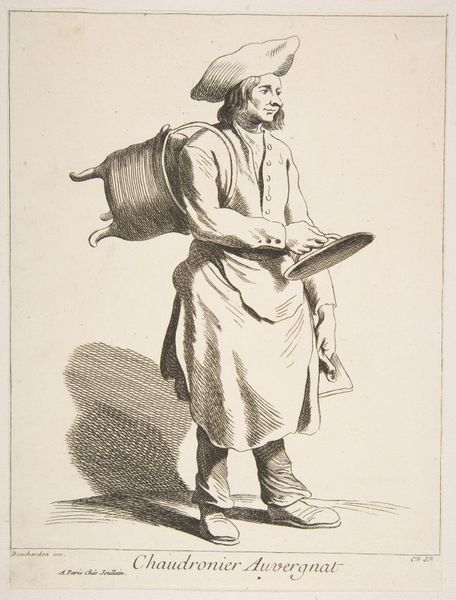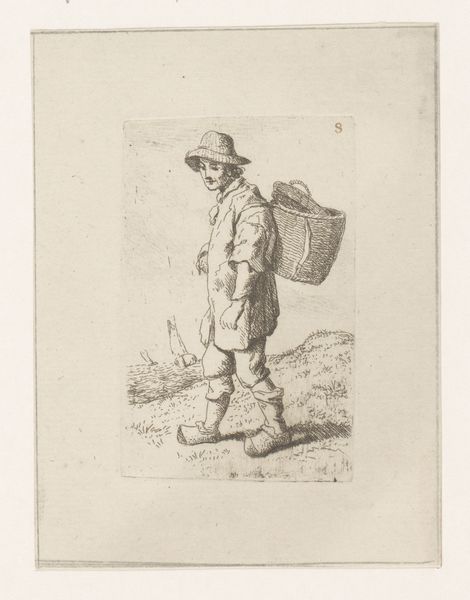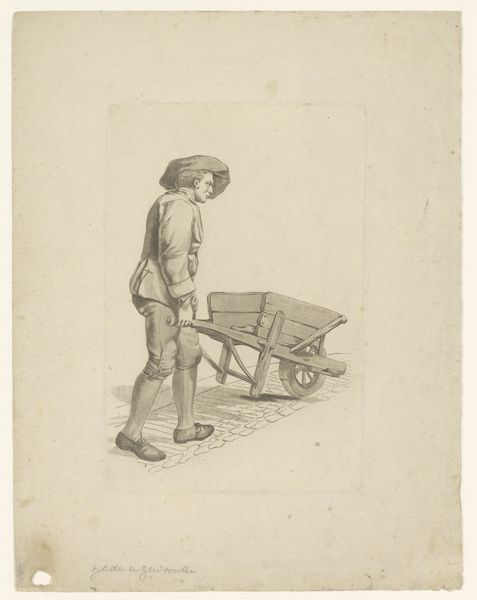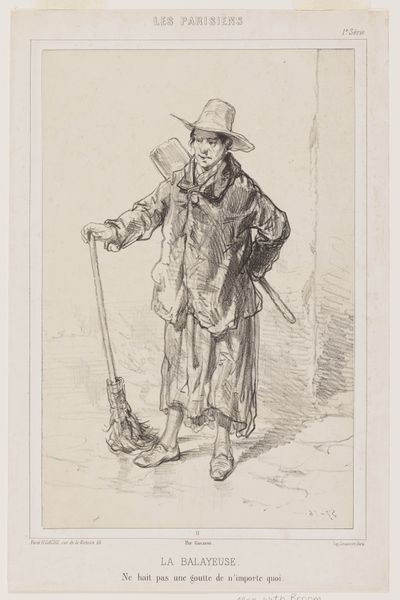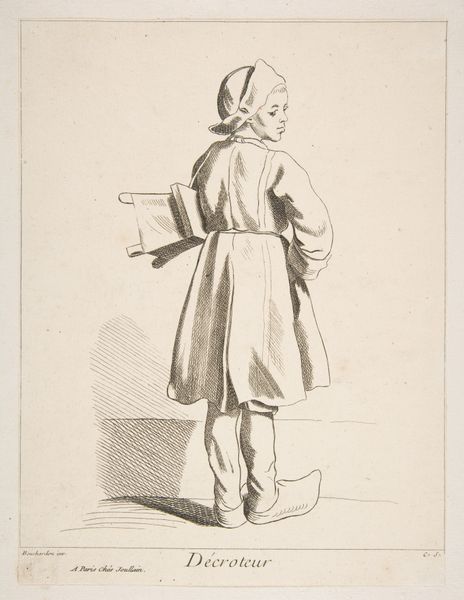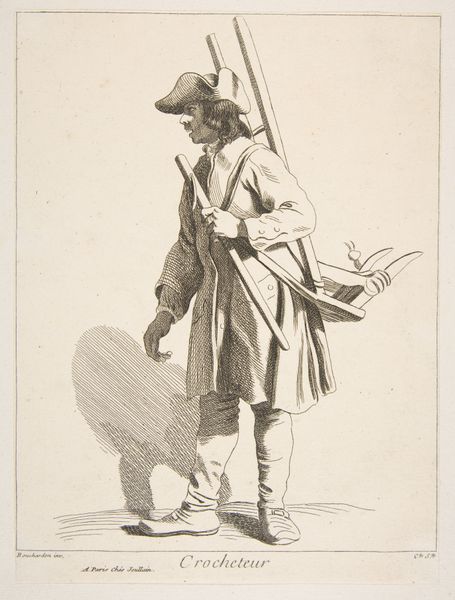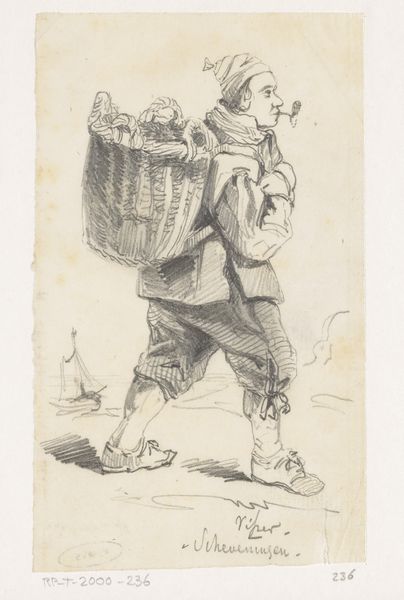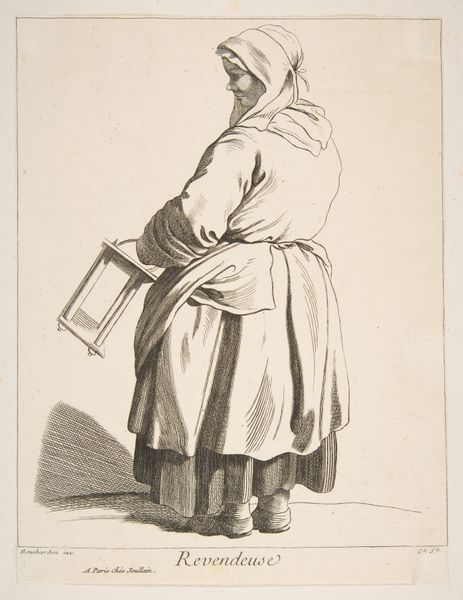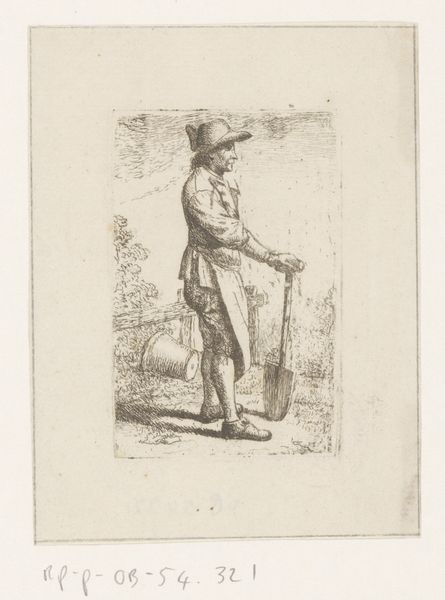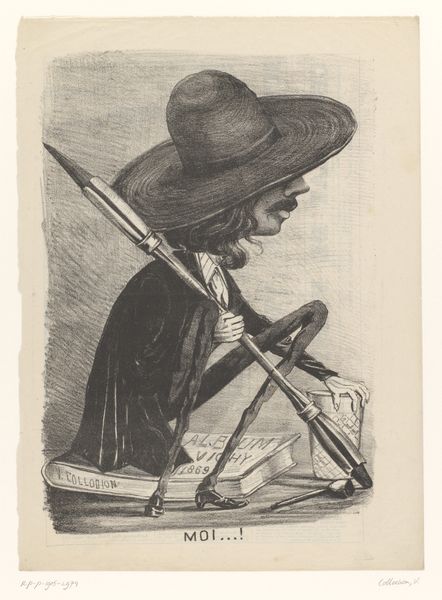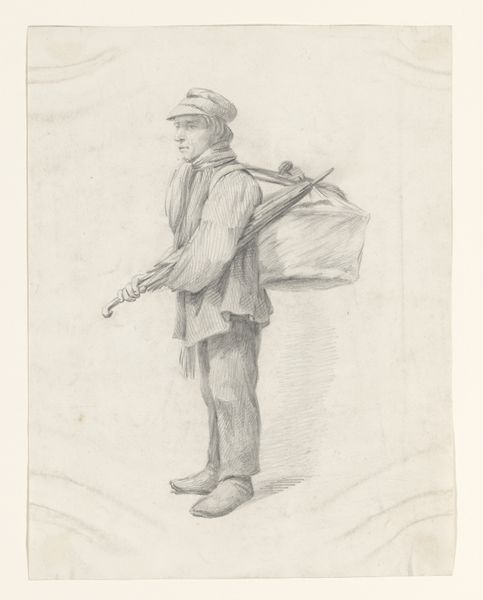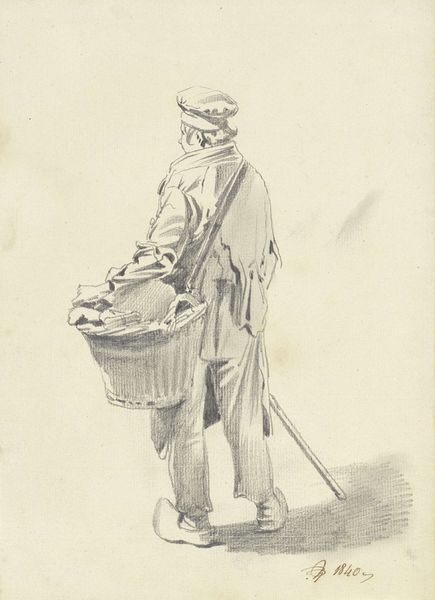
drawing, print, etching
#
drawing
#
baroque
# print
#
etching
#
figuration
#
men
#
line
#
portrait drawing
#
genre-painting
#
realism
Dimensions: Sheet: 9 3/16 x 6 5/8 in. (23.4 x 16.8 cm) Image: 8 7/16 x 6 9/16 in. (21.5 x 16.7 cm)
Copyright: Public Domain
Editor: So, this is Anne Claude Philippe Caylus's "Water Carrier" from 1742, currently housed at the Met. It's an etching, depicting a man carrying buckets of water. It’s a simple, almost humble image. What strikes me is its focus on everyday labor, but I’m wondering, what social commentary, if any, do you see in it? Curator: Indeed, its focus on labor is key. Consider the art world of 1742. Aristocratic patronage dictated taste, yet here's Caylus elevating a commoner. This image participates in a growing trend within the art world - this genre-painting or *peinture de moeurs*, emphasizing Realism over idealized portrayals of mythological or biblical subjects. To what extent might this focus on the everyday be interpreted as a subtly political act? Editor: That’s interesting – a political act simply by representing ordinary life. The subject is not a grand aristocrat, but a water carrier, a profession often overlooked. Do you think the Baroque influence added to this intention somehow? Curator: The Baroque era, in decline by 1742, was indeed marked by grandeur. Caylus strips that away, leaving us with something arguably more relatable, a pre-cursor perhaps to a kind of early photojournalism of daily experience for an emergent middle-class. How does the print format influence its reception do you think? Editor: Ah, that makes sense. Being a print makes it more accessible and distributable, giving everyday people a chance to contemplate. Curator: Precisely. This artwork challenges the elitist view that art must always concern itself with elevated subjects. Instead, Caylus shows dignity in the everyday and points to how artistic forms like prints are evolving to engage more egalitarian audiences. What do you think this understanding of the Water Carrier brings to your view of Baroque? Editor: I think I’ll be studying prints more closely now, as vital elements of how everyday experiences entered into and shaped broader public conversations and challenged how visual messages could be circulated. Thank you for shining light on the societal roles present within Caylus’ print.
Comments
No comments
Be the first to comment and join the conversation on the ultimate creative platform.
